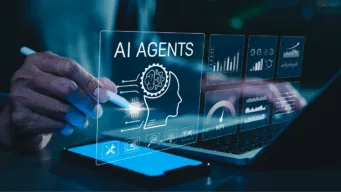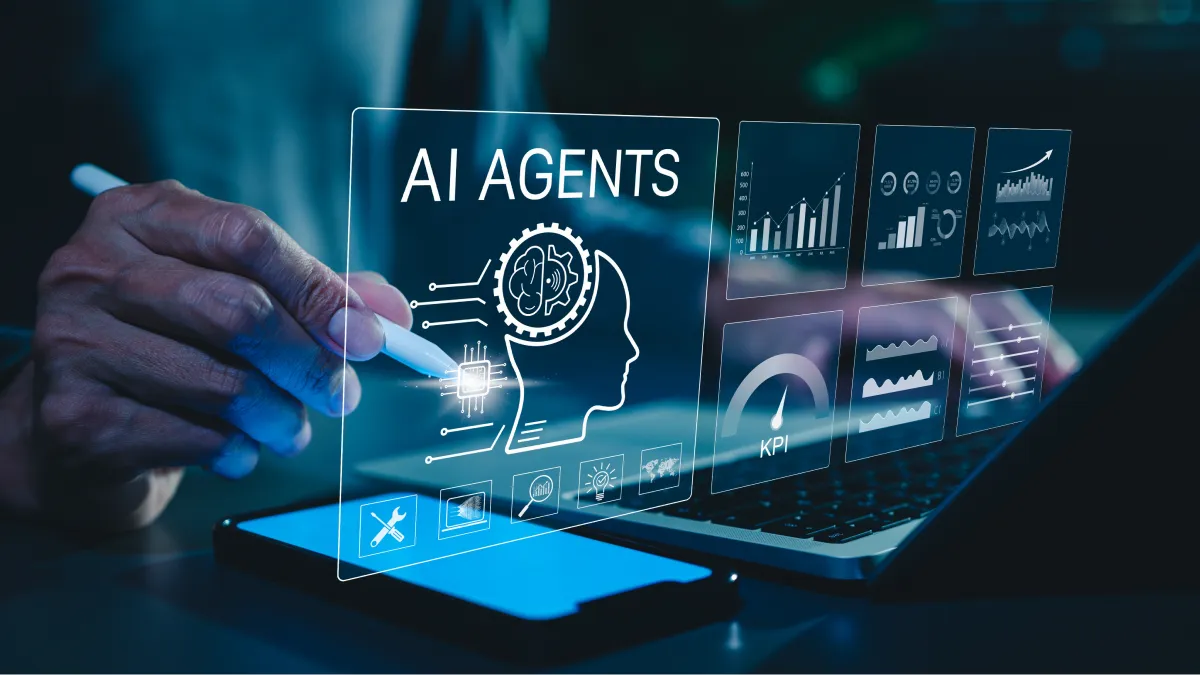Agentic IoT: The Future of Autonomous Enterprise Operations
Blog: OpenText Blogs

The enterprise world is buzzing with talk of agentic AI, which describes autonomous, goal-driven AI agents capable of perceiving, deciding, and acting with minimal human input. But while much of the focus has been on digital workflows, a more profound transformation is already emerging: Agentic IoT.
If agentic AI is the brain, agentic IoT is the nervous system and body. It could extend intelligence into the physical world of machines, sensors, vehicles, and spaces. With agentic IoT, AI agents won't just process digital signals; they will interact with and orchestrate real-world operations in real time
For years, IoT has promised enterprises greater visibility: sensors reporting machine status, tags tracking shipments, platforms displaying dashboards of assets in motion. But in today’s world, visibility is not enough. Executives want to know: can my systems act, not just observe?
Enter agentic IoT, which will deliver the convergence of connected devices with agentic AI.
From connected IoT to autonomous IoT systems
Traditional IoT has been largely descriptive: showing what happened or what is happening. Agentic IoT is prescriptive and autonomous. It connects real-world data streams with AI agents that are:
- Goal-driven – optimizing uptime, throughput, safety, or sustainability targets.
- Adaptive – re-planning in real time when disruptions occur.
- Action-oriented – executing changes across systems, machines, and workflows, not just raising alerts.
Think of it as IoT’s evolution from a network of “things” to a network of intelligent actors.
What is Agentic IoT?
Agentic IoT brings together two powerful technologies:
- IoT connectivity – Millions of distributed devices capture real-time data on assets, environments, and people.
- Agentic AI – Autonomous agents interpret signals, predict outcomes, and take action on behalf of humans.
Together, they create self-directing digital twins of complex systems like supply chains, factories, fleets, and retail networks.
Unlike traditional IoT dashboards or rule-based automation, agentic IoT systems don’t wait for human input. They set goals, adapt continuously, and act independently, which allows them to unlock real-time optimization at scale.
Why Agentic IoT Matters
Your ERP system organizes business processes. Your analytics platform delivers insights. And your IoT devices stream real-time signals from the physical world. But without an intelligent layer between sensing and action, those signals often stop short of delivering real autonomy.
Agentic IoT fills that gap. It’s the missing link that turns passive data into purposeful action that helps enterprises move from knowing what’s happening to automatically doing something about it.
From orchestration to autonomy
Think of agentic IoT as agentic orchestration: smart agents working behind the scenes to make systems self-directing. These agents coordinate across the entire business landscape:
- Assets – Machines schedule their own maintenance before failures happen.
- Environments – Cold chains reroute themselves when temperature thresholds slip.
- Processes – Production lines adjust in real time to shift demand or delays.
- Partners – Digital agents negotiate delivery terms, stock levels, or routing with suppliers and carriers.
This isn't an automation as usual. It’s systems thinking and acting on their own.
Designed for enterprise trust
Agentic IoT isn’t about turning on your lights with a phone. It’s built for mission-critical environments where downtime costs millions, and trust is non-negotiable.
Enterprises need more than smart devices. They need:
- Transparency to know why actions were taken
- Security to protect systems from bad actors
- Governance to ensure actions align with policy
Agentic IoT builds these controls into its foundation so that autonomy enhances resilience, not risk.
Why agentic IoT is emerging now
Agentic IoT isn’t just possible today, it’s becoming essential. There are three forces converging to make autonomous systems both viable and urgent:
1. Smarter AI agents
AI has advanced rapidly. Today’s large and small language models can reason, plan, and take multi-step actions. Reinforcement learning helps agents adapt to changing environments and learn from outcomes. These might sound similar to chatbots, but they are actually decision-makers.
2. Always-on IoT infrastructure
Thanks to 5G, edge computing, and low-cost sensors, nearly every machine, shipment, and environment can now stream real-time data. The physical world is connected like never before, and it’s ready to act.
3. Rising pressure for resilience
From global supply chains to energy grids, businesses need systems that can withstand disruption and bounce back fast. Manual responses are too slow. Autonomous systems offer the speed and adaptability modern enterprises demand.
Together, these trends are reshaping what’s possible. Agentic IoT systems don’t just raise alerts, they respond, recover, and keep your operations moving, even when the unexpected hits.
What Agentic IoT Looks Like
Agentic IoT is already reshaping how industries operate. Intelligent agents are moving from pilots to production, solving real-world problems without waiting for human input. Here’s how it plays out across sectors:
In manufacturing: A production agent detects unusual motor vibrations. It schedules predictive maintenance, reallocates workloads to other lines, and orders replacement parts automatically. No manual intervention needed.
In logistics: A fleet agent identifies a weather disruption. It reroutes trucks, negotiates new carrier capacity, and updates delivery times in real time to keep shipments on track.
In retail: An inventory agent spots an empty shelf. It triggers a restock order, adjusts inventory across stores, and fine-tunes pricing to balance demand and supply.
These aren’t hypothetical scenarios. Agentic IoT is already enabling them through advanced capabilities like anomaly detection, natural language rule orchestration, AI-driven insights, and spatial intelligence.
Strategic Impact of agentic IoT in enterprises
Agentic IoT enables a new kind of digital twin. These aren’t static models. They’re dynamic, intelligent systems that act on their own to drive real-time decisions and improvements.
Autonomous digital twins can:
- Mirror the current state of operations with live data
- Simulate multiple scenarios and select the best course of action
- Coordinate across distributed assets and systems to execute decisions
The result is a smarter, more resilient enterprise. Supply chains adjust themselves based on shifting conditions. Factories optimize performance moment by moment. Infrastructure anticipates risks and responds automatically, before people even notice there’s an issue.
Guardrails for Adoption
Like any powerful technology, agentic IoT requires responsible deployment:
- Governance: Define when agents act autonomously vs. escalate to humans.
- Interoperability: Ensure agents work across IoT, ERP, and cloud platforms.
- Transparency: Maintain audit trails for actions and decisions.
- Trust: Embed security and ethics to avoid bias, drift, or unsafe actions.
Enterprises that adopt these guardrails will unlock agility without losing control.
The future: Autonomous supply chains powered by agentic IoT
We are entering the era of autonomous supply chain agents. By 2026, frontline teams will likely work alongside AI copilots that constantly monitor IoT signals and take action in real time. These agents will reroute shipments, adjust production schedules, and balance priorities such as cost and carbon footprint, without needing manual intervention.
At OpenText, we see agentic IoT not as a separate concept, but as the natural evolution of Aviator IoT. It extends digital operations by turning insights into action, instantly and intelligently. The future supply chain will be self-healing, self-optimizing, and self-directing. Humans will set the strategy, while agentic systems deliver results at machine speed.
Ready to move from automation to autonomy? Explore Aviator IoT and see how you can build the foundation for agentic IoT today.
The post Agentic IoT: The Future of Autonomous Enterprise Operations appeared first on OpenText Blogs.
